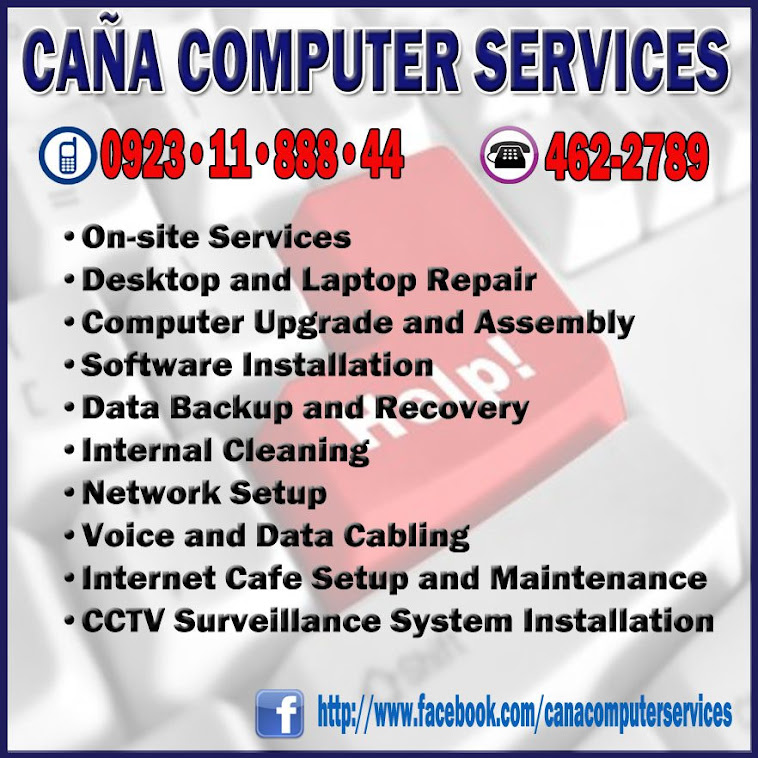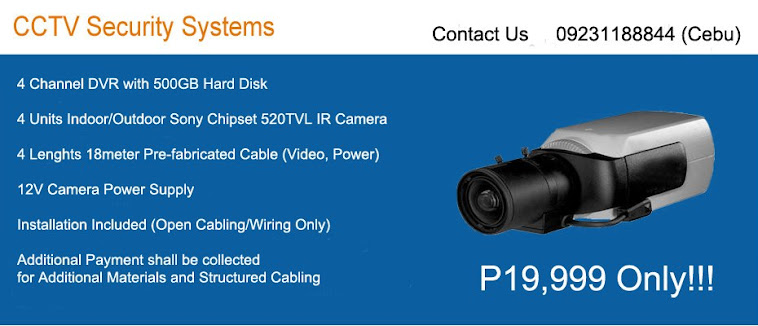This is an article I've read from www.selfgrowth.com, an article written by Rick Sheridan. This is very helpful to people who are planning to buy a PC.
Author's Bio
Rick Sheridan is a PhD student who has developed a free online health course for senior citizens. This distance education course teaches seniors how to use the Internet for their health and medical research. See the course at: http://ComputerAccessible.com
Buying a computer is a major purchase and you should study the options carefully. The two main types of computer operating systems are the PC (Windows) and Macintosh. Since PC's dominate about 90% of the market, this report will focus on them, although many of the tips will also apply to the Macintosh computers.
Factors to Consider:
Buy from a Reputable Dealer- before you buy your next computer, check the warranty. One year is average, three is better. Will the technician come to you or do you have to bring the machine in? What is the average turn around time for their repairs? If you are expected to deal with telephone technical support, test the number to see if you get constant busy signals. Check out Consumer Reports and other publications dedicated to evaluating warranties and computer quality. I would generally recommend buying locally if the price is anywhere near what you can get via mail order. Also, an extended warranty is usually worth it.
How will you use the computer- Knowing how you'll use your computer will help you determine what type of minimum requirements the computer needs to have. For example, computers that run graphic design programs generally need more memory (RAM) than computers used for simple word processing operations. The size of the software you plan to run will dictate how much memory your computer should have. Be sure to check the inventory of what's on the computer, so you'll know what you're getting. Salesmen will often try to make you feel as if you need the maximum memory offered (at a higher price). Often you don's need all that power for common operations.
How Much Should You Spend- Depending on your needs, be prepared to spend between $500 for an entry-level computer to $3,000 for a high-end computer. Take into consideration whether the monitor is included or costs extra. Sometimes printers, scanners and software are included in the deal. Be sure to purchase a surge protector, a software backup system (CD burner or Zip drive), along with anti-virus and a troubleshooting program (such as Norton Utilities).
Computer Terminology Glossary
Here are some basic computer terms that will help you understand what the salesman is talking about:
CD-ROM Drive: Most new computers come with a CD-ROM drive as standard equipment. CD's store lots of data and are the normal way to install new programs.
CPU: The CPU, or central processing unit, is the brains of the computer and performs many of the operations. Most Windows-based programs use a Pentium processor.
Disk Drive: Virtually all computers come with a disk drive that can read and save information on portable diskettes, also called floppy disks. You can use floppy disks to save information or to load new software onto your computer.
Hard Drive: The hard drive also is called the hard disk. You'll probably never see it because it is nestled inside your computer. It's the computer's electronic filling cabinet, and it stores the computer's operating system, files, programs and documents.
Keyboard: Just like a typewriter keyboard, this device is the way of inputting data into the software that you will be operating.
Megahertz (MHz): This is the clock speed of the microprocessor. The higher the number, the quicker the information is processed. MHz relates to how many millions of instructions can be processed per second.
Memory: This is the circuitry or device that holds information in an electrical or magnetic form. There is read-only memory (ROM), which is information primarily stored on a disk, and random-access memory (RAM), which is chip-based storage inside the computer. Memory is typically measured in megabytes (MBs).
Modem: This mechanism connects a computer to a phone line so information can be sent from one computer to another or the user can access an on-line service or the Internet. In view of the popularity of the Internet, a modem is now considered basic equipment and comes on practically all new computers. Most modems come with fax capabilities, too. Faster Internet speeds are available with DSL or cable connections.
Monitor: An output device that allows you to see what you are doing. Older computers came with 14 or 15 inch monitors. Many new computers have 17 or 21 inch monitors, but they often cost extra.
Motherboard: The motherboard is the circuit board that everything in the computer plugs into. The CPU, RAM and cache all plug into the motherboard.
Mouse: The mouse is another input device that makes getting around in your computer easier. It is a handheld object that is good for doing tasks such as moving and pointing to objects on the screen, and can replace the function and control keys of the keyboard.
Printer: A printer is an essential part of the computer if you want a hard copy of your work. There are three main types of printers on the market: inkjet, bubble jet and laser. Most inkjets and bubble jets can print color and graphics, and a laser printer offers the best resolution at the highest speed (and price).
RAM: Computers save data in two ways: on the hard drive (permanently) and in random access memory (temporarily while the software is running). New computer buyers should look for models with at least 128 MBs of RAM (or more, depending on what types of programs you'll be running). Make sure that the computer can be upgraded.
Scanner: This device can input written documents, pictures or photographs directly into your computer. There are three types of scanners: handheld, hopper-feed and flatbed.
Sound Card: This device allows your computer to reproduce music, sounds and recorded voices. Make sure you have a sound card if you're planning to play multimedia games.
Video Card: The video card is the part of the computer that sends the images to the monitor.
Computer Buyer's Checklist-
Before you walk into a computer store or call a mail order source, go over the list of the items (hardware and software) that you might consider purchasing. Ask the salesperson questions about the computer you are interested in and jot down your notes.
Processor type
_____________________________________________
Processor Speed in MHz
_____________________________________________
RAM (memory)
_____________________________________________
Cache
_____________________________________________
Hard Drive Capacity
_____________________________________________
Sound & Video Card
_____________________________________________
Monitor Size? Is it included in the price?
_____________________________________________
Printer: Is it included in the price?
_____________________________________________
Type of Printer (inkjet, bubble jet, laser)
_____________________________________________
Modem (internal, external, speed)
_____________________________________________
Can you set up a fax or voice mail on the modem?
_____________________________________________
Is there a toll-free technical support phone number?
_____________________________________________
What cables are needed to set up the system?
_____________________________________________
Are there any additional accessories that might be useful, e.g., storage cases, furniture, extra cabling, anti-glare screen for monitor?
________________________



No comments:
Post a Comment